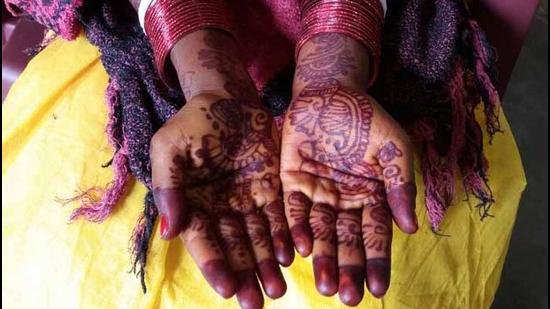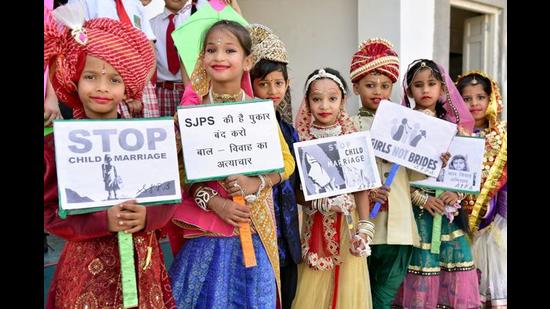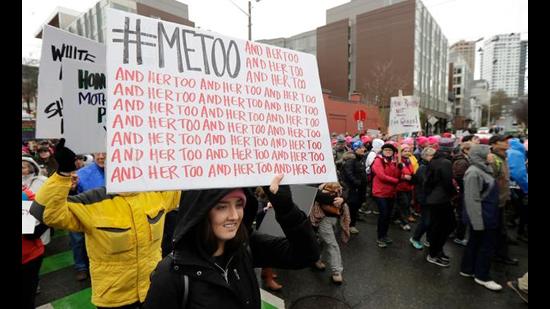Mind The Gap | From child marriage to MeToo, legitimising oppressive practices
This week saw child marriage back in the news. This and the Bombay High Court's new guidelines on sexual harassment at the workplace are worrying developments.
This week saw child marriage back in the news when Rajasthan governor, Kalraj Mishra, sent back a bill for the registration of such marriages for further legal examination, reports Sachin Saini. The bill was passed by the assembly on September 17 amid an Opposition walk-out.

Child brides: India’s enduring shame
The bill, which becomes law only after the governor signs off, requires parents to register the marriage of their children “if the bride is under 18 and the groom is under 21”. Criticism has been vociferous. The National Commission for Protection of Child Rights wrote to the government to reconsider the move. And a public interest litigation was filed in the Supreme Court.
The objection? Mandating the registration of child marriage would amount to legitimising such marriages.
But, the criticism ignores one central fact: The registration of all marriages of people below the age of 21 is already required under the existing law. Also, in 2006, the Supreme Court asked the government to notify procedures for marriage registration. The new amendment only differentiates between the ages of the bride and groom.
The amendment debate has been an “unhelpful binary”, says lawyer Madhu Mehra of Partners for Law in Development (PLD). “Registration signals that marriage has taken place. It secures a girl’s matrimonial rights,” she said.
Child marriage is India’s enduring shame and we are home to the largest number of child brides in the world, with 1.5 million girls under 18 married every year, according to Unicef.
While the past decade saw a 19% decline in child marriages, the Covid-19 pandemic — which resulted in the prolonged closure of schools, inaccessibility of online classes due to an existing gender digital gap, and economic distress — could reverse these gains. In its 2020 Global Girlhood Report, The Lancet predicted that 0.5 million more girls worldwide are at risk of being forced into child marriage.
In India, between March and May 2020, Childline India, an organisation that helps children in distress, intervened in 5,333 such marriages. Given that there was a strict lockdown and no mobility, the numbers are high and worrying.

Where do India’s child brides live?
Five states — Uttar Pradesh, Bihar, West Bengal, Maharashtra, and Madhya Pradesh — account for half of India’s child brides. Three in four of all married children live in rural India.
A proposal to raise the minimum age of marriage for girls to 21, at par with grooms, announced by Prime Minister Narendra Modi in his 2020 Independence Day speech has had mixed reactions. While there are obvious benefits to the delayed marriage of girls — later motherhood, greater likelihood of them being able to study further — Madhu Mehra believes that this move will rob them further of agency, until they reach the age of 21. A taskforce headed by politician Jaya Jaitley is considering the question.
MeToo: Protecting the perpetrator
Nearly three years after India’s MeToo movement brought forth an outpouring of rage, frustration, and revelation in October 2018, the Bombay High Court, on September 24, has issued guidelines for cases regarding the sexual harassment of women at work — a first by any high court.
Unprecedented among the seven-page list of guidelines issued by Justice Gautam Patel is a guarantee of anonymity to the accuser, the accused, the company where they work and all parties, including witnesses, to the case. Orders will no longer be heard in open court, nor uploaded on the courts’ website. The entire record must be sealed and may not be released without a specific court order. Any breach of guidelines will be treated as contempt of court.
Indian law has so far guaranteed anonymity to rape survivors to protect them from further violence and stigma. Now, for the first time, the guidelines have been extended to protect not just the accuser but also the accused and the company where they work.
Anger against what some see as a gag order was immediate. “Survivors of sexual violence require tremendous courage to come forward and report the violence, and their privacy remains intimately linked to their survival,” read a statement issued by the Forum of Oppression Against Women. Extending protection to the accused is strange “when powerful men accused of sexual harassment continue to attempt to suppress women’s voices on social media and in news media with gag orders,” the statement said.

The case that led to the framing of these guidelines is known only as P vs A & Ors. It arose from a petition filed by Ms P who was terminated from service after she complained of sexual harassment by a male supervisor in the company where they worked. Ms P has now filed for compensation for wrongful termination and is represented by lawyer Abha Singh who said she could not comment on the ongoing case.
POSH, or the Sexual Harassment of Women at Workplace (Prevention, Prohibition and Redressal) Act is framed to enable women to file complaints that are then examined by an internal complaints committee set up by the company. The committee, under law, comprises at least two other employees and an external member.
How does the law ensure that both the complainant and committee members can speak up without fear of reprisal? Can committee members be assured that they will not lose their jobs if they rule against a powerful male boss? Can women complain without being sacked?
There is no clarity. Only a reminder that speaking up can come at an unacceptably high price.
Stories you might have missed
A champion: Anshu Malik became the first Indian woman wrestler to reach the World Championship final.

Equal opportunity: The Odisha government has issued an equal opportunity policy for transpersons which will result in the appointment of a complaint officer who will redress grievances within 15 days of receiving a complaint, reports Debabrata Mohanty.
Raped and killed: Shruti Tomar reports on another disturbing incident in India’s shameful rape story where a 17-year-old rape survivor was killed by her own family who witnessed a neighbour raping her at home in Jabalpur, Madhya Pradesh.
Women of the world
Gender studies: A new study by the Institute of Fiscal Studies, an independent research institute, examines the gender pay gap among early graduates. It finds that even though women are more likely to get a first-class degree than men, women choose to study creative arts and different subjects at university, with men are more likely to study subjects like economics that lead to higher-paying jobs. Read more here.
Mind The Gap is a weekly column that adds perspective to the gender developments of the week.
That’s it for this week. If you have a tip or information on gender-related developments that you would like to share, write to me at: namita.bhandare@gmail.com.
Namita Bhandare writes and reports on gender
Marika Gabriel contributed to the making of this page
Continue reading with HT Premium Subscription





